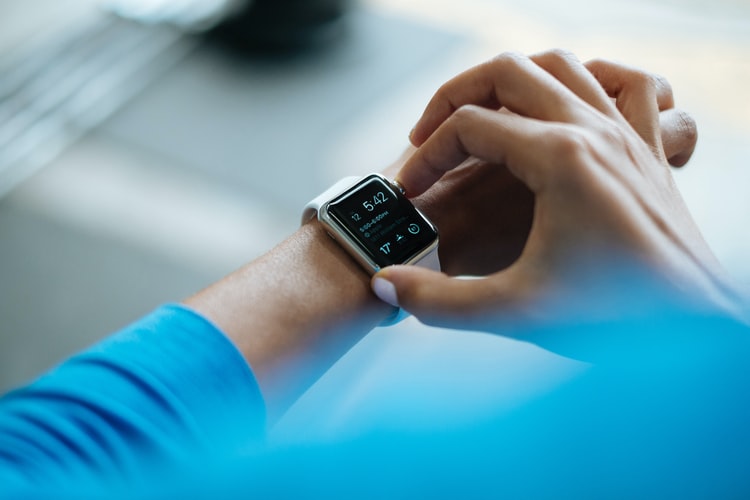Depression and Anxiety During a Pandemic: 9 Common Tips
The pandemic has caused a mental strain on many people around the world. And for those living with anxiety and depression, the impact is severe.
The COVID-19 pandemic has had a major effect on our lives. Many aspects of everyday life, including mental health, have been affected. The COVID-19 pandemic is impacting our physical, economic, and mental well-being. As a result, many people face struggles that can be frustrating, daunting, and cause adults and children to have strong emotions.
However, social distancing and stay-at-home orders are very challenging, especially for people living with mental illness, COVID-19 exacerbates feelings of depression and anxiety.
Thus, during the Movement Control Order (MCO), with the limited movement, closed borders, and roadblocks, some individuals easily get heightened temperament and irritability at home.
Dr. Robert Leahy an attending psychologist at New York-Presbyterian said: “This is the perfect storm for depression and anxiety,”.
All data and statistics are based on the short article “Prevalence of Anxiety, Stress, Depression among Malaysian Adults during COVID-19 Pandemic Movement Control Order”.
Therefore, the prevalence in a score of Stress 70% (Mean=2.02), Anxiety 67% (Mean=1.71) and Depression 42.3% (Mean=2.28). There is a significant prevalence of psychological health problems among adults during adverse events due to the COVID-19 Pandemic Movement Control Order.
In the midst of the global COVID-19 pandemic, it’s easy to felt hopeless and despair. But these tips can help to improve your mood and ease your mental health problem.
1. Keep a schedule
Schedule your day with useful things. At the end of the day, check everything and make a list of things to do for the next day, so you can look forward to things.
Furthermore, create a set of goals for the week and month. This is the right time to set short-term and long-term goals.
2. Sleep well
Prioritizing sleep is not always easy when you are in a state of mental health. Stress, Anxiety, and Depression can affect the quality of your sleep.
Therefore, poor sleep can also lead to depression. Fixed your daytime habits and sleep routine can help improve how well you sleep at night and reduce the symptoms of depression.
Finding relaxing activities such as reading, writing a journal, or listening to slow music can cause your brain to slow down before bed.
3. Connect with others
Just because we are isolated does not mean we have to completely isolate ourselves. Make a list of friends to contact whenever you feel bored and lonely. Always stay connected with others !
Set a regular time each day to contact others, and schedule virtual get-togethers on online platforms to talk or share your problem and maybe even play games. Stay in touch with friends, family, and especially the mental health care team if you are diagnosed with anxiety and depression.
4. Find simple sources of joy.
Encourage yourself to do things that will boost your mood throughout the day. Try to listen to uplifting music and dancing around if you can as long as can make you happy all day long.
Alternatively, you can watch funny videos or favorite sitcoms on TV, Instagram, Facebook, or YouTube. Spending time in nature such as walking in the park, or playing with your kids or a pet also can relieve stress.
5. Eat a mood-boosting diet
In times of stress, people always find “comfort foods” such as unhealthy fats, sugar, and refined carbs to release their stress and depression. Therefore, drinks too much caffeine and alcohol also can adversely affect our mood.
Moreover, wholesome foods, fresh food such as salmon, codfish can increase your intake of mood-enhancing nutrients.
6. Stay informed and limit social media usage.
Nowadays, the government always announces information that constantly changes regarding SOP. It is important to stay up-to-date but not to overconsuming sensationalistic news or unreliable social media coverage. This makes your mind full of negative thought and fear.
Limit how often you check the news or social media and limit yourself to reputable sources. Thus, healthcare professionals also recommend not checking the news at least one hour before bedtime.
7. Exercise
Importantly, physical activity is good for mental health. Scientific research has shown that exercise, especially in particular aerobic exercise, can be beneficial for depression and anxiety.
Exercise will release good hormones and lowers your stress hormones. Since covid-19, you cannot go to the gym or fitness studios, try online broadcasts, YouTube workouts, or use the equipment at home to exercise.
Besides that, you can go running or cycling as long as you stay a safe distance away from others who are passing by.
8. Continue treatment or services from mental health professionals
If you are undergoing therapy, taking medication, or both before coronavirus started, make sure to keep up with your treatment regimen. Almost all psychiatrists or mental health professionals are now used online practices like video calls.
Alternatively, you can try an online therapy platform like WhatsApp video, Zoom, Webex, and others.
9. Practice gratefulness and mindfulness
During challenging times, be grateful and mindful can help to cope with anxiety and depression.
“When we take note of the good things in our lives, it bumps up the feel-good hormones of serotonin and dopamine,” said Serani.
As we know, practicing mindfulness meditation is very popular for overcoming depression, anxiety, and stress adds Guttentag.
Also, you can start the practice by taking a few minutes to sit or lying down and try to focus on your breathing. Besides, train your mind to get rid of negative thoughts and feelings to stay away from you.
Counseling and hotlines mental health services in Malaysia
If you are struggling to cope, there are many ways to get help. Contact a healthcare provider if the sign of anxiety, and depression get in the way of your daily activities for many days and also if you are in crisis, immediately get help such as:-
- Call 999
- Talian Kasih at 15999
- Befrienders (main suicide hotlines in Malaysia): 03-7627 2929/ 03-79568145
- Malaysian Mental Health Association: 03-2780 6803
- People Psychological Solutions : 017-899 2207
- HELP University’s Centre for Psychological and Counselling Services (CPCS): 03-2096 1212
- The Mind Faculty KL: 03-2780 6803
- HumanKind Community Counselling (victims of physical and sexual abuse): 012-300 5453
- Soul Mechanics: 010-252 1734 (Gia) / 019-395 9211 (Devi)
- MentCouch Psychology Centre: 03-2712 9372
Depression and anxiety are soaring and there are many fears that we will face an epidemic of mental health.
COVID-19, make life very difficult for everyone, but they may pose an even bigger challenge for people with depression. Depression is a serious mental health condition that can give a huge impact on people’s lives.
However, depression can be treated. Even in this pandemic, it is important to continue to seek treatment and stick with it until you get cured.
Therefore, there are self tests that you can answer to check whether you have anxiety or depression, if the score tells you are having these mental health issues you need to see the doctors who specialize in psychiatry to diagnosed your disease. We cannot simply just do the test only. These self tests ask some important questions that can help you to know where you are at so you can make a sooner plan for feeling better.
References:
- https://www.healthline.com/health-news/managing-depression-and-anxiety-may-be-harder-during-covid-19-these-12-tips-can-help#12.-Use-telemedicine
- https://healthmatters.nyp.org/how-to-avoid-depression-during-the-coronavirus-outbreak/
- https://www.helpguide.org/articles/depression/dealing-with-depression-during-coronavirus.htm
Depression, anxiety, stress, global, pandemic, COVID-19, common, tips, mental, mental health, mental illness, severe, impact, effect, lives, emotions, social distancing, MCO, prevelence, improve, mood, problem, schedule, sleep, well, set, goals, short-term, long-term, relax, symptoms, connect, isolate, time, virtual, online, platform, diagnose, joy, encourage, nature, “comfort food”, unhealthy, nutrients, diet, mood, boost, enhance, social, media, SOP, social media, news, healthcare professional, exercise, hormones, grateful, mindful, cope, serotonin, dopamine, thought, feeling, counselling, hotlines, services, healthcare provider, crisis, challenge, self tests, score, psychiatry, disease, plan.
ABOUT THE AUTHOR
SHARE ON

Raihan Ridzuan
Raihan Ridzuan, Bachelor of Science (Hons) Pharmacology, is Customer Relationship Executive of Mayflax, one of the nation’s leading healthcare and marketing company.
SHARE ON
You might also like














